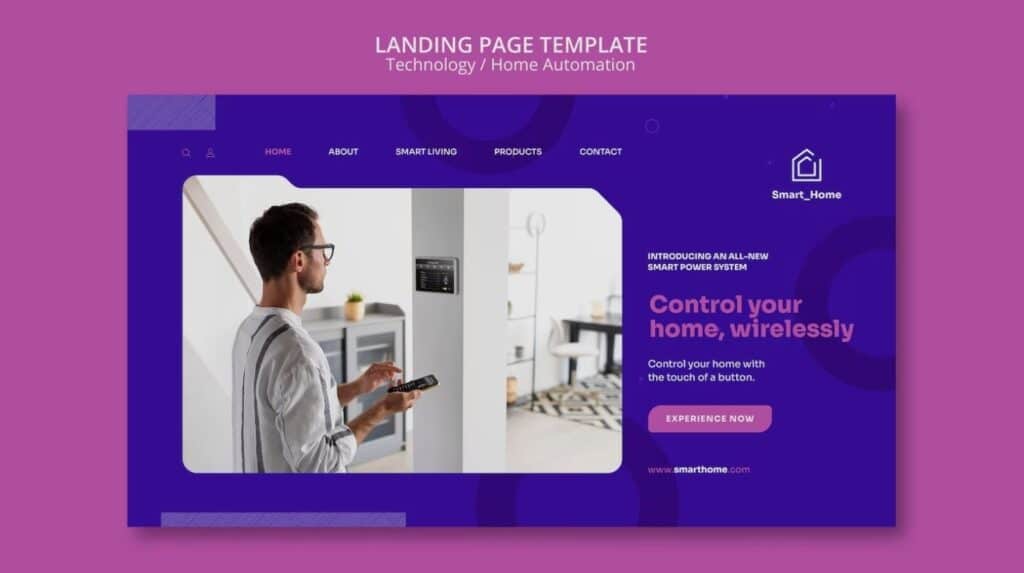In today’s digital world, having a strong online presence is essential for HVAC businesses. A well-designed website not only helps establish credibility but also attracts more customers and boosts conversions. If you’re an HVAC contractor looking to expand your business, investing in a professionally designed HVAC website is crucial. In this guide, we’ll explore key elements of HVAC website design, best practices, and how to ensure your website generates leads and sales effectively.

Why an HVAC Business Needs a Professional Website
The HVAC industry is highly competitive, and customers often search online for services before making a decision. A well-optimized website ensures your business appears in search results and helps you stand out from competitors. Here are some reasons why an HVAC website is essential:
- Establishes Credibility: A professionally designed website enhances trust among potential customers.
- Attracts More Traffic: SEO-friendly HVAC websites rank higher on search engines, bringing in organic traffic.
- Generates Leads: An intuitive design and strong call-to-actions (CTAs) turn visitors into leads.
- Showcases Services: A website serves as a portfolio where you can highlight HVAC services, testimonials, and case studies.
- Provides 24/7 Accessibility: Customers can explore your services and contact you anytime, even outside business hours.
Key Elements of an HVAC Website Design
To create a high-converting HVAC website, you need to incorporate essential design elements that enhance user experience and drive engagement. Below are key components to consider:
1. User-Friendly Navigation
A well-structured HVAC website should be easy to navigate. Clear menus, categories, and an intuitive layout make it easier for users to find information about your services. Key navigation elements include:
- Home
- About Us
- Services
- Testimonials
- Contact Us
- Blog (for content marketing and SEO purposes)
2. Mobile-Responsive Design
More than 60% of users browse the internet on mobile devices. Ensuring that your HVAC website is mobile-friendly is crucial for improving user experience and boosting search engine rankings.
3. Fast Load Speed
A slow website can drive potential customers away. Optimize your site’s speed by using compressed images, caching techniques, and fast hosting services.
4. SEO Optimization
SEO (Search Engine Optimization) plays a crucial role in driving organic traffic to your HVAC website. Implement strategies such as:
- Keyword Optimization: Use industry-specific keywords like “HVAC repair,” “AC installation,” and “heating services.”
- Local SEO: Optimize your website for local searches by including location-based keywords (e.g., “HVAC services in New York”).
- Meta Tags & Descriptions: Write compelling meta descriptions to improve click-through rates.
- Quality Content: Publish blog posts and service pages with valuable HVAC-related content.
5. Compelling Call-to-Actions (CTAs)
A strong CTA encourages visitors to take action, whether it’s calling for a consultation or requesting a free quote. Examples of effective CTAs include:
- “Get a Free Estimate”
- “Schedule an Appointment”
- “Call Us Now for HVAC Services”
6. Trust Signals & Testimonials
Customers want to work with reliable HVAC contractors. Adding trust signals like customer testimonials, industry certifications, and awards can boost credibility.
7. Service Pages with Clear Descriptions
Each HVAC service should have its own dedicated page with detailed descriptions. This helps in ranking higher for relevant keywords and provides clarity to potential customers.
8. Contact Information & Forms
Your HVAC website should include a visible and easy-to-access contact page with:
- A contact form
- A phone number
- A Google Maps integration for local customers
Best Practices for HVAC Website Design
Here are some best practices to follow when designing your HVAC website:
1. Use a Clean & Professional Design
Avoid clutter and opt for a professional-looking design that aligns with your brand. A simple yet effective layout with high-quality images will enhance user engagement.
2. Ensure ADA Compliance
Making your HVAC website accessible to all users, including those with disabilities, improves usability and broadens your audience.
3. Incorporate Live Chat & Chatbots
Adding a live chat feature or chatbot can improve customer support and help answer visitor inquiries instantly.
4. Create Engaging Content
Blogging about HVAC maintenance tips, energy-saving tips, and troubleshooting guides can position your business as an industry authority and improve SEO.
5. Use High-Quality Images & Videos
Visual content enhances engagement. Use professional images and videos showcasing your HVAC services, team, and customer testimonials.
How High Tech BD Can Help with HVAC Website Design
At High Tech BD, we specialize in designing and developing high-converting HVAC websites that drive leads and increase revenue. Our services include:
- Custom WordPress Website Design
- SEO Optimization for HVAC Businesses
- Mobile-Friendly and Fast-Loading Sites
- Lead Generation Strategies
- Content Marketing & Blog Management
With years of experience in website design and digital marketing, we ensure that your HVAC website stands out and brings measurable results.
Conclusion
An effective HVAC website design can significantly impact your business by attracting more customers and increasing conversions. By implementing user-friendly navigation, SEO optimization, fast-loading pages, and strong CTAs, you can ensure your website performs well in search rankings and engages visitors.
If you need a professional HVAC website design, High Tech BD is here to help. Contact us today to get started on building a high-converting website for your HVAC business!


